You would surely grab a bottle of insecticide if you spotted a cockroach-like figure running in front of you. And you start to wonder, are there bugs that look like cockroaches but aren’t?
There are bugs that are similar in appearance to cockroaches. Here are some good examples:
1. Bed Bug
2. Palmetto Bug
3. Giant Water Bug
4. Termites
5. Crickets
6. Asian Longhorned Beetle
7. June Bug
8. Ground Beetle
9. Wood-Boring Beetle
10. Palo Verde Beetle
Now that we have identified the bugs that vehemently look like cockroaches, let us discover more interesting facts about them by knowing their traits and classifications, including the distinguishing characteristics and behaviors of bugs that mimic them.
What Is a Cockroach?
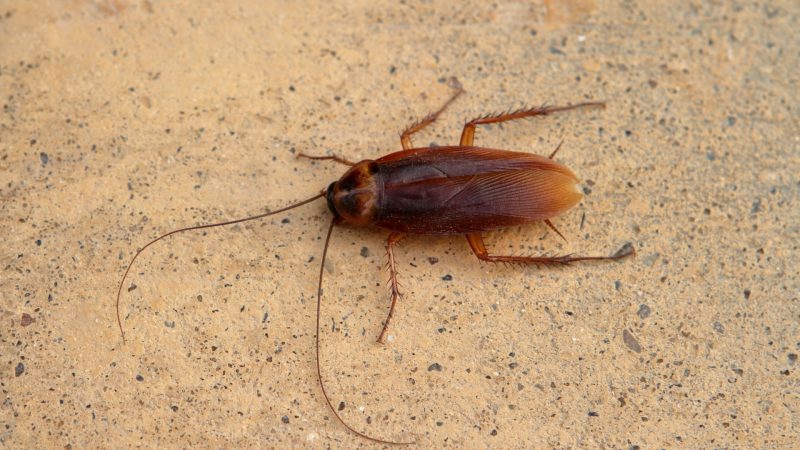
Cockroaches are insects belonging to the order Blattodea and class Insecta. They are reddish-brown to black in color, while their bodies are oval and flat.
Additionally, they have long and slender antennae and six strong legs built for intense running. Because their wings only completely grow when they reach adulthood, immature cockroaches generally have smaller or no wings.
The eggs from the females are enclosed in egg cases. Each of these egg cases may contain 30 to 40 eggs. The cockroaches that hatch from these eggs are known as nymphs, and they are more prevalent than adult species.
Because most of these insects thrive in locations where human activity is abundant, they are most of the time considered pests. This is due to their capacity to contaminate kitchen and food utensils, emit unpleasant odors, and bring diseases such as cholera, dysentery, and typhoid fever.
Related: What Is a Cockroach? | Comprehensive Overview
How Do You Tell if a Bug Is a Cockroach?
To tell if a bug is a cockroach, the following traits must be evident:
- Color: Must be reddish-brown to black.
- Bodies: Must appear flat and oval.
- Antennae: Must be long and slender.
- Measurement: Their bodies must be at least ¾ to 3 inches.
- They must be really fast runners.
Can You Get Cockroaches in a Clean House?
Cockroaches may live in clean houses. Even when you constantly clean the surroundings, cockroaches will still invade your homes because the majority of their time is spent looking for food and water resources. Thus, the presence of these pests is not a clear indication of an unsanitary or unhygienic lifestyle.
Related: Where Do Cockroaches Live? | Preferred Habitats and Prevention Techniques
Bugs That Look Like a Cockroach | Identification, Habitat, and Behavior
Bed Bug
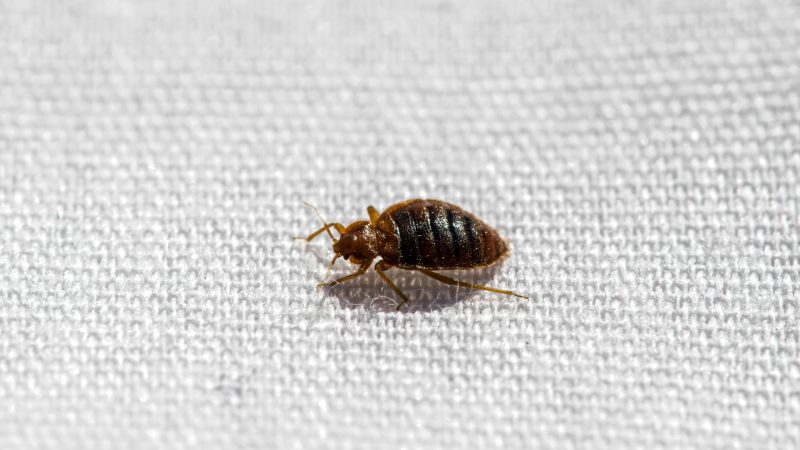
Identification: Adult bed bugs are reddish to brown in color, measure 3/16 inches in length, and have flat and oval bodies.
Habitat: They can be present in houses, hotels, or apartments. Additionally, they are good hitchhikers, so they can easily attach to clothes, shoes, and luggage. They can also sneak from one room or floor to another and may crawl through openings and holes.
Behavior: They are nocturnal. But during the day, they prefer to conceal themselves near spaces where people sleep. They can also crawl lengthy distances to look for food.
In comparison to cockroaches: The majority of bed bugs are misidentified as German cockroach nymphs. This is because of their similarities in color (light to dark brown), size (about 0.25 inches long), and lack of wings. However, they differ in body shape and length of antennae as the body structure of bed bugs is more oval in appearance and their antennae is shorter.
Related: How Big Are Bed Bugs? A Helpful Size and Identification Guide
Palmetto Bug
Identification: Adult palmetto bugs are reddish to brown in color but have a yellow band at their pronotum. They range in length from 1 3/8 to 2 1/8 inches. Their abdomen is sheltered with their wings.
Habitat: They prefer dark and moist places and can also stay outdoors, such as in palm trees, sewers, and dead trees.
Behavior: They are very active during the night. During the day, they hide in dark and secluded places.
In comparison to cockroaches: Both of them are the same. “Palmetto bug” is just a fancy term coined by people in Florida because these cockroaches love to lurk behind palmetto leaves.
Giant Water Bug
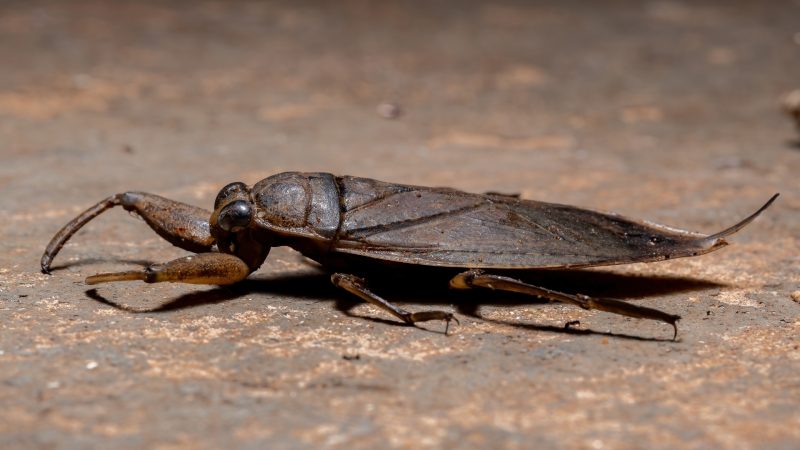
Identification: The bodies of giant water bugs are oval in shape, and they have claw-like structures in the front. They may also extend up to 4 inches.
Habitat: They live in slow-moving bodies of water, marshes, and freshwater ponds.
Behavior: They prey on small fish, tadpoles, and insects by fully gripping them and putting poisonous substances on them. Also, they are highly attracted to lights.
In comparison to cockroaches: The majority of people think that water bugs belong to the family of cockroaches. But this is actually not true. Water bugs thrive in water most of the time, while cockroaches cannot. However, they may prefer moist conditions.
Related: Natural Ways To Get Rid of Waterbugs | Effective and Eco-Friendly Methods
Termites
Identification: Termites have a creamy tinge and extend to at least 3 to 4 millimeters. However, the swarmers are dark brown to black in color and measure 4 millimeters.
Habitat: They live in underground areas, but they may also thrive in wet places above the ground.
Behavior: They regularly damage or feed on wood structures, paper, insulation materials, pool liners, books, living trees, and shrubs.
In comparison to cockroaches: Termites are related to the class of cockroaches. However, they are not so similar in terms of habits and appearance. Additionally, termites are small in size as their length is only 0.16 to 0.59 inches, while cockroaches have a larger build. Termites are also social creatures, while cockroaches desire a solitary environment.
Crickets

Identification: Crickets have cylindrical and flat bodies with long antennae and circular heads. The biggest cricket species may measure up to 2 inches.
Habitat: They are widely found in bushes, herbs, grasses, and tree canopies. But they can also be seen in caves and rotting trees.
Behavior: Most of them are heavily active during the night. In the daytime, they hide under stones or barks of trees, crevices, and leaves.
In comparison to cockroaches: At first glance, crickets may be often perceived as cockroaches since they both have the same color (dark brown to black) and long antennae. However, if you look closely, you will find out that crickets have a more tubular body and their hind legs are longer. Crickets can also jump, while cockroaches can only run, crawl or climb.
Asian Longhorned Beetle
Identification: They appear shiny black and around 0.7 to 1.6 inches in length. Their wing covers have 10 to 20 white or yellow-orange spots.
Habitat: They are originally from Korea, China, Japan, and the Isle of Hainan. Additionally, they are attracted to hardwood trees.
Behavior: They consistently attack healthy trees like mulberry, elm, apple, pear, and citrus. However, they may also infest logs, roots, and branches of trees.
In comparison to cockroaches: Both Asian longhorned beetles and cockroaches have the same body structure (oval shape) and size (1 to 3 inches). Nonetheless, they may differ in color, as Asian longhorned beetles have a shiny black appearance with white spots scattered over their bodies.
June Bug
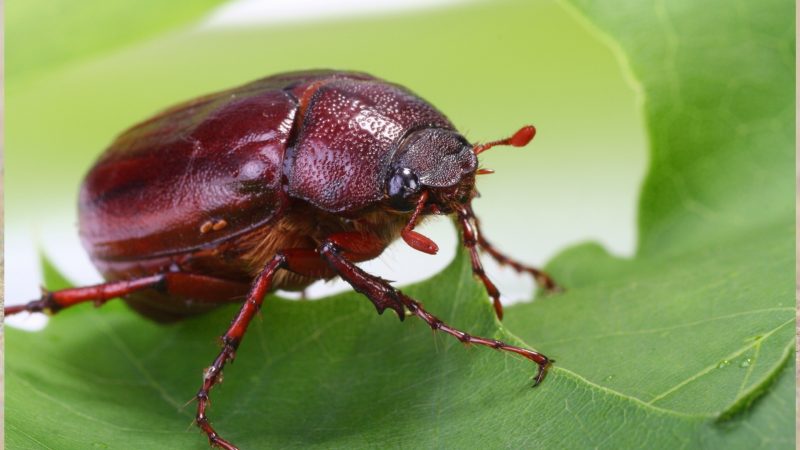
Identification: June bugs have brown, black, or rusty color, and their bodies have hairs beneath them. The adult bugs measure ½ to 1 inch, while larvae may be ¾ to 2 inches in size.
Habitat: They are usually seen circling around porch lights while their larvae typically dig on the soil.
Behavior: They are greatly attracted to lights and tend to destroy crops. But they cannot cause harm or injury to humans.
In comparison to cockroaches: Both June bugs and cockroaches have a reddish-brown to black hue, but the former has a round body structure and usually resides on trees. June bugs are herbivores who move slowly, but cockroaches are omnivores who move quickly.
Ground Beetle
Identification: Ground beetles have flat, dark bodies with several ridges on their wing covers. They can range in size from 1/8 to 1 inch.
Habitat: They are generally found under barks, logs, and stones.
Behavior: They enjoy lights and hunt for prey at night. When faced with a perilous situation, they react quickly.
In comparison to cockroaches: Both of them have the same reddish-brown color and oval body structure, but their distinguishing trait lies in the character of their wings. The frontal wings of ground beetles are strong and sturdy, while those of cockroaches are typically soft. Also, ground beetles are considered herbivores and are not usually considered nuisances, unlike cockroaches.
Wood-Boring Beetle
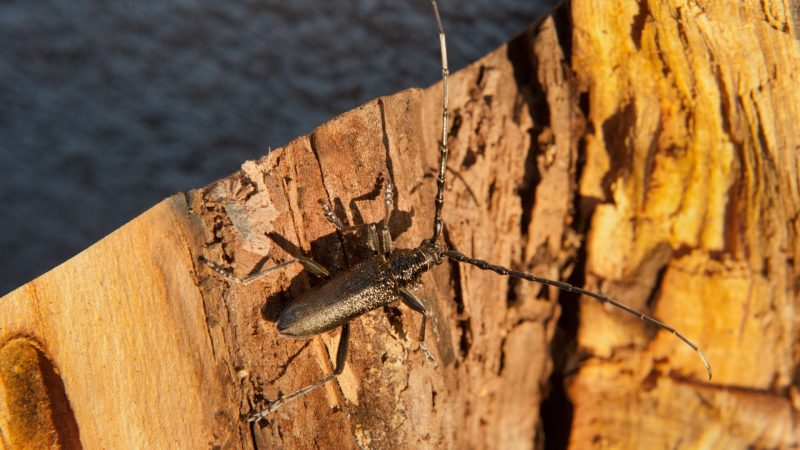
Identification: Wood-boring beetles have brown to black oval-shaped bodies. They have long antennae and six legs.
Habitat: They stay most of the time in trees and forest areas.
Behavior: They are fond of causing damage to wood structures by punching holes in them.
In comparison to cockroaches: You may compare wood-boring beetles to cockroaches due to their similar color, antennae dimension, number of legs, and oval body shape. But these beetles primarily rest on wood and wood structures, while cockroaches may lurk on non-wood areas.
Related: Borer Beetle Control: How To Get Rid of Borer Beetles in Trees?
Palo Verde Beetle
Identification: Palo Verde beetles are dark brown in color and measure 3 to 3.5 inches long. Their antennae are a little curved.
Habitat: These beetles, which get their name from the Palo Verde tree that grows in the Sonoran Desert, are frequently observed surrounding it.
Behavior: They grow up under the trees. Once they become adults, they go out of their habitat to fly and look for mates.
In comparison to cockroaches: Cockroaches and Palo Verde beetles share similar appearances. But when you meticulously observe their appearances, the former have darker brown colors, lengthier bodies (0.5 to 3 inches), thicker antennae size, and sturdier shells. Furthermore, because they prefer the outdoors, Palo Verde beetles cannot survive for long inside houses.
What Are the Different Types of Cockroaches?
The following are the various classifications of cockroaches:
Related: Different Types of Cockroaches: Identification Chart
1. American Cockroach
The American cockroach has a yellow lining found at the bottom part of their heads. They measure 1 3/8 to 2 1/8 inches upon reaching maturity and rarely fly despite having fully-developed wings.
Additionally, they prefer moist and dark locations such as in-floor drains, basements, sewer places, laundry rooms, and steam tunnels, although they will move outside when the warm season arrives. They can also travel long distances from the areas where they usually congregate.
Related: How to Get Rid of American Cockroaches? | Effective Methods and Prevention Tips
2. Brown Banded Cockroach
Brown-banded cockroaches have black striations behind their heads and yellow linings on their wings. They are frequently spotted in houses, specifically on cabinets, ceilings, closets, walls, frames, decorations, or behind furniture. The females also lay their eggs on enclosed and covered surfaces such as dressers and cabinets.
3. German Cockroach
The German cockroach is the most common breed of cockroach as they flourish in areas where human activities are rampant. They are about ½ inch in dimension and are usually pale brown with two dark striations behind the shield figures of their heads.
Additionally, they prosper in humid and warm environments. Their favorite breeding places are the areas near ovens, toasters, and other heat-producing devices, inside pantries and cabinets, under toilets and sinks, and behind dishwashers, refrigerators, and stoves. They travel from one establishment to another by connecting pipes, ceilings, wires, walls, and other open structures.
Related: How to Get Rid of German Cockroaches? | Effective Methods and Prevention Tips
4. Hissing Cockroach
A hissing cockroach, also known as Madagascar hissing cockroach, measures 2 to 4 inches in length and weighs at least 1/4 to 7/8 ounces. The bodies of these insects are covered in a brown to black sclerotic coating but during their molting phase, hissing cockroaches may appear white. They are cold-blooded and often reside in dark and moist environments.
5. Oriental Cockroach
Oriental cockroaches appear in shades of dark brown to black and are usually 1 inch long. They are typically found in damp and dark places such as basements and sewers.
However, they can also be seen in the garbage and under plant wastes and stones. Because of this, they are regarded as the dirtiest kind of cockroaches as they love to feed on human or animal waste, trash, and decaying materials.
Related: How to Get Rid of Oriental Cockroaches? | Effective Techniques and Prevention Tips
List of Sources
Hahn, J., Ascerno, M. (2019). Cockroaches. University of Minnesota Extension.
Mulder, P., Shufran, A. (2017). Madagascar Hissing Cockroaches: Information and Care. Oklahoma State University.
Potter, M. F. (2020). Bed Bugs. University of Kentucky.
Merchant, M. (2018). American cockroach. Texas A&M AgriLife Extension Entomology.
- How to Get Rid of Cockroaches? | Proven Strategies & Solutions! - June 24, 2023
- Powerful Homemade Wasp and Bee Sprays (with Recipes) - March 4, 2023
- Crazy Ants Invasion | Eradicate & Prevent Unwanted Guests - February 24, 2023
